by Susan Dean | Feb 6, 2018 | Animals, Gardening, Land Animals
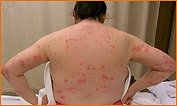
Bed Bug Bites
Bug Bites and Bee Stings: Raise your hand if you have ever seen an insect? Let children talk and say what they have seen. Introduce insects using models and posters. Insects have 6 legs and an exoskeleton (shell on the outside). Raise your hand if you have ever been bitten or stung by an insect? Let them talk about things that stung or bit them. Spiders, ticks, fleas, mites and lice belong to a group of animals called arachnids and they have 8 legs.
Discuss insects & arachnids that bite or sting (ex. bee, hornet, wasp, bumble bee, ant (fire ant & red velvet ant) flea, bed bug, chigger, louse, tick, and gnat. Discuss how some bites make you itch and some animals can carry diseases. Ticks bite you, suck your blood, and are most frequent in May and June. Female mosquitoes suck your blood to lay eggs in water. Bed bugs bite and suck blood and make you itch. Baby chiggers make you itch. They digest your skin with their saliva, lap it up, and fall off in 3 days.
Bees nest in old trees or hives, collect nectar and pollen, sting and leave the stinger and poison sac that pumps poison into you until you remove it. Make sure you remove the stinger and sac. Wasps’ are reddish brown, sting and nests under porches and buildings. Hornets are black and white, sting and make football nests in trees. Fire ants make tall hill that may go 15 feet deep. They bite you and it blisters and can be serious if you are allergic. Yellow Jackets are yellow with black stripes, sting, and live underground or in stumps. Spiders such as the black widow and brown recluse (violin spider) hide in dark places and can bite you if disturbed and make you very sick. Many spiders and scorpions like woodpiles for homes.
Remedy for bites & stings: Put ice on it or a mixture of baking soda and water. Witch hazel helps to eliminate itching. If you were going for a walk in the woods, how would you dress? Always wear shoes and socks, long pants, long sleeve shirt, cap or scarf, insect repellent with less than 10% deet, no bright colors or perfume, cover food, take water and don’t drink soda from an open can. Yellow jackets like them! Don’t swat at them or run around because that makes them angry. Move quickly and quietly away.
MATERIALS: Models of the animals: ticks, mosquito, ants, brown recluse spider, black widow, honeybee, posters of insects and arachnids, samples of larva, cocoons, nests etc.
Bug Jokes List
ACTIVITIES: Let children examine models of insects and spiders, their metamorphosis, and the posters of insects and arachnids. Children sing and act out “This is a Song about Sammy” using insects such as bee, grasshopper, butterfly, and ant. Share bug Jokes. Let children watch power point program on insects and spiders showing examples of them and what the bites look like.
by Susan Dean | Feb 6, 2018 | Gardening, Plants
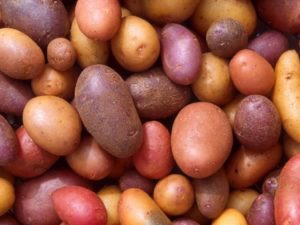
Potatoes
Throughout history, they’ve been maligned as food fit only for animals and revered as “apples of life.” These vegetables kept Incan civilizations thriving, helped fuel the Industrial Revolution, triggered mass population shifts, and are now one of the world’s four most important food corps. They are used to produce paper, adhesive, biodegradable plastics, and even cosmetics. Potatoes can provide an exciting focus for scientific investigations, nutritional lessons, and for exploring world cultures and history.
Classroom gardeners don’t have to be a bunch of couch potatoes. Have each student bring in a potato, then have pairs or small groups of students observe the tubers, writing down all of the observations they can make as well as things they know about potatoes. Make a class chart with the headings: Things We Know About Potatoes and Things We’d Like to Know. At the end of your potato adventures add columns What We Learned and Questions we Still Have. Refer to the chart throughout your potato study andat the end to assess what students have gained.
Students should discover that it has numerous small indentations or “eyes” (and even eyebrows!). These are the beginnings of tiny buds that, with the right conditions, will produce sprouts. Farmers and gardeners plant pieces of potatoes with eyes (called “seed potatoes”) instead of growing potatoes from actual seeds. When a piece of potato is planted, the starch in this seed piece “feeds” the plant until it’s leaves are mature enough to photosynthesize and produce their own nutrients. The nutrients in the seed piece are used up in the process.
Take a wide mouthed jar and using a few toothpicks inserted around the potato, sit the potato on top of the jar so that a portion of the potato in the water. Place it in a window. You’ll find stems and leaves emerging from the potato sprout and thread-like roots growing from their base. Compound potato leaves (made-up of small leaflets) will eventually be arranged around the stem in a spiral pattern, an adaptation to ensure that each leaf receives as much sun as possible.
Potato plants have underground stem extensions called rhizomes. Once the plant has finished its initial phase of growth, the leaves make more carbohydrates than is necessary for plant growth. The extra is stored as starch in the rhizomes. As this starch builds up, the tips swell into the tubers we call potatoes. Though potato plants produce flowers, seeds and small fruits, these are not part of our diet. Compare potato flowers with those of their relatives-tomatoes, eggplant, peppers, petunias, and tobacco and see if you notice a family resemblance!
Ancestors of the Incas living high in the Andes in South America more than 6,000 years ago are believed to have stumbled on many types of small, bitter wild potatoes that survived well in the harsh mountain climate. These early farmers developed sophisticated growing methods, allowing them to cultivate huge quantities of potatoes. To keep their precious harvest from spoiling, they spread potatoes on the ground until they froze overnight, then walked on the potatoes the following day to squeeze out the water. After letting them dry in the sun and repeating this for several days, they had a dried powder called chuno, the first freeze-dried product!
When Spanish explorers came to Peru in the 1500s looking for gold and silver, they paid little attention to these homely tubers, and the few potatoes that they did take back to Europe were not an immediate hit. People were skeptical since this strange new food grew underground. It didn’t help matters when Queen Elizabeth’s cooks threw out tubers and cooked the leaves and stems making the royal guests ill! Potatoes were at times considered as peasant food barely fit for human consumption and at other times reserved as a delicacy for the wealthy class! Easy to grow in many climates and soils, potatoes had by the mid-1800s become one of Europe’s most important foods. The poor masses finally had a crop that was easy to grow and process, was very nutritious, and could be raised on small plots. Nourished on potatoes, more children survived than were needed to help on farms and as more people moved to cities to work in factories the Industrial Revolution thrived.
Take away the extra fat and deep-frying, and a baked potato is an exceptionally healthful low calorie, high fiber food that offers significant protection against cardiovascular disease and cancer. Our food ranking system qualified potatoes as a good source of vitamin B6, vitamin C, copper, potassium, manganese, and dietary fiber. Sixty different kinds of phytochemicals and vitamins are in the skins and flesh of 100 wild and commercially grown potatoes. Analysis of Red and Norkotah potatoes revealed that these spuds’ phenolic content rivals that of broccoli, spinach and Brussels sprouts, and includes flavonoids with protective activity against cardiovascular disease, respiratory problems and certain cancers. Potatoes have been identified with high levels of vitamin C, folic acid, quercetin and kukoamines. These last compounds, which have blood pressure lowering potential, have only been found in one other plant, Lycium chinense (a.k.a., wolfberry/gogi berry).
Potatoes also contain a variety of phytonutrients that have antioxidant activity. Among these important health-promoting compounds are carotenoids, flavonoids, and caffeic acid, as well as unique tuber storage proteins, such as patatin, which exhibit activity against free radicals.
Nutrients inPotatoes 1.00 each baked (173.00 grams)
vitamin C 27.6% vitamin B 627%
potassium 26.4% tryptophan 21.8%
manganese 19% fiber 15.2%
Calories (160)8%
SOOO MANY KINDS OF POTATOES!
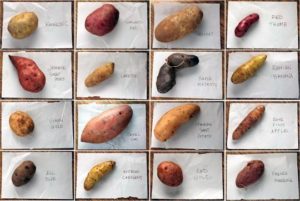

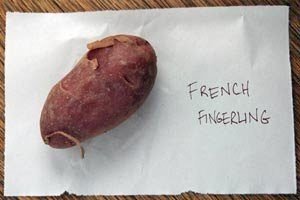
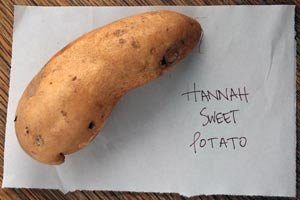
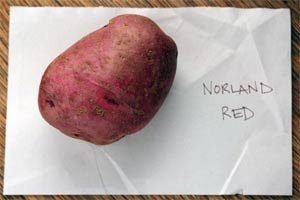

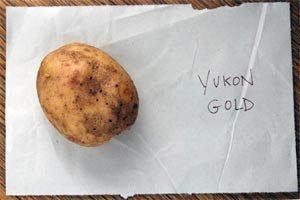
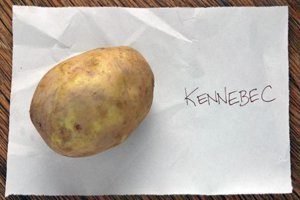
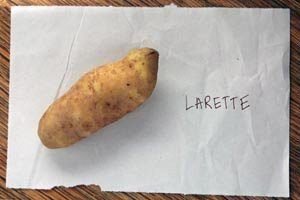
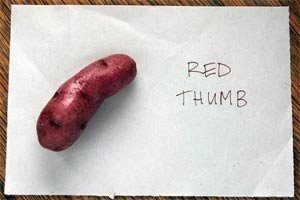
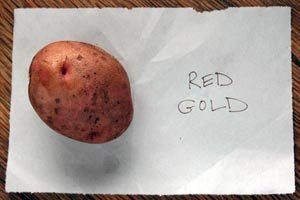
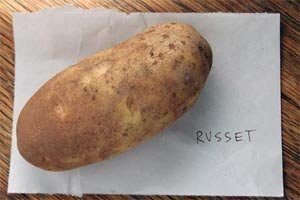

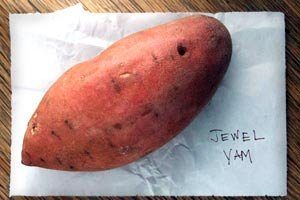
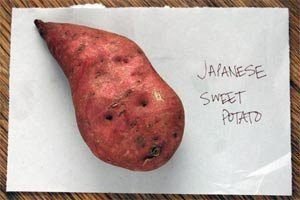
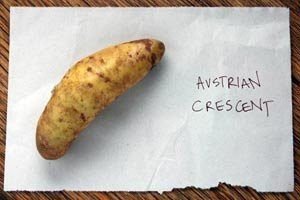
by Susan Dean | Feb 6, 2018 | Gardening, Plants
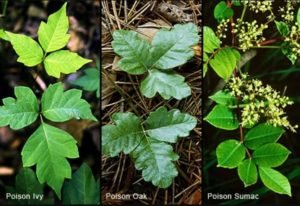
Hairy vine – No friend of mine!
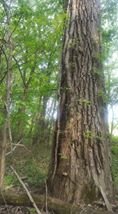

Poison Ivy and Poison Oak
Nothing takes the fun out of being outdoors faster than an encounter with poison ivy. It regenerates readily, is everywhere, and people loathe it. All are perennials in the cashew family, and all cause a rash, blisters, and itch. “Leaves of three, let them be” is still the best way to identify poison ivy and poison oak. Poison ivy’s leaves are pointed. Poison oak’s leaflets are rounded. Poison Ivy’s “leaves of three” are glossy-green, but are tinged with pink in the spring, and take on a brilliant orange in the autumn. It has small, pearl-colored berries that are a favorite treat of many birds, which spread poison ivy seeds around the countryside.
The poison is an oily resin called urushiol that occupies every part of the plant, including the roots. The leaves, especially young ones, contain the most toxins. The oil can remain on tool handles and clothing for as long as a year. Dogs and cats can carry its potency on their fur. This is why you can come down with a rash without having seen poison ivy in months. Fortunately, the oils don’t always go to work immediately, especially on dirty or work-hardened hands.
Both poison ivy and poison oak grow in sun or shade, in wet or dry places, and turn vivid colors in fall. The berries are white and are a good identifier once the leaves have fallen off in early winter. Poison ivy can grow as a groundcover, a shrub, or a vine. Emerging leaves have a red tint to their edges. It grows as a vine or shrub. Both poison ivy and poison oak climb trees, sending out thick, hairy, aerial roots. Virginia creeper is often mistaken for poison ivy, but Virginia creeper has five leaflets, and blue-black berries.
Protect Yourself – If you come in contact with poison ivy, wash at once and launder your clothes using old yellow laundry soap or borax to cut the oil. (Soaps made with fat are ineffective.) For mild cases use calamine lotion, over-the-counter cortisone creams, and saltwater soaks, but severe cases require prescription cortisone. A barrier cream, IvyBlock, containing quaternium-18 bentonite, which bonds with the urushiol, promises to be effective 68%of the time, if applied before any contact with poison ivy.
Wear long sleeves, pants, closed shoes, thick gloves, and even a mask when removing poison ivy and poison oak. Ivy Block is an FDA-approved lotion that, when applied before exposure, prevents skin that comes in contact with urushiol from developing the rash. It’s available at drugstores.
Wash all clothes, even shoelaces (without touching them with your bare hands), after working near poison ivy and poison oak. Use hot water, detergent, and two wash cycles.
Wipe down any surface that has come in contact with the oil (tool handles, doorknobs, shoes, etc.).
Wash it away. Do not wipe with water. Urushiol is an oil. Rinse the affected skin with isopropyl (rubbing) alcohol, then with cold water. Don’t wipe. Wiping spreads the oil.
Burt’s Bees Poison Ivy Soap and Res-Q Ointment also remove the oil and relieve itching. Without treatment, the infected area will blister within a few hours to three days. The fluid in the blisters will not spread the rash, but any clothing that has come into contact with the oil will. Oral antihistamines can help, if needed.
Poison ivy and poison oak spread by seed and by their vigorous root systems. Birds eat the berries and deposit the seeds. If you have wooded or neglected areas surrounding your property, you probably have poison ivy as a neighbor, and given time, it will creep into your yard. Plants can be destroyed by covering them with black plastic or spraying them with the appropriate herbicides, but beware—even dead plants are infectious.
Five ways to beat this foe into submission:
1. Keep it out. Prevent poison ivy or poison oak from taking hold in the first place. If you are landscaping or tilling soil for a new bed or garden, don’t leave the ground bare for long.
2. Small infestations are more easily controlled than larger ones, because they have less-developed root systems, fewer stored food reserves in roots and rhizomes, and a smaller seed bank in the soil. Poison ivy can be readily pulled in early spring if only a few plants are involved.
3. Cut it off. As with all perennials, you must completely remove the root or the plant will resprout. Unfortunately, poison ivy roots can run underground for many feet before the plant reappears above ground. If endless digging is not appealing or an option, repeatedly cutting the plant to the ground eventually starves the root system and causes the plant to die. Plants climbing trees should be severed at the base. Don’t bother removing the vines from the tree; they don’t do any harm. The weed is just using the tree for anchorage. It’s not a parasitic relation- ship.
4. Smother it. Cover the infested area with thick black plastic sheeting, and plan to leave it there for at least a year, possibly longer. Make sure the plastic isn’t the type that degrades in the sun, and cover the edges with dirt to exclude all light.
5. Chew it up. Grazing animals, especially goats, are not bothered by urushiol and can clean up an infested area. They won’t take out the root system but will get rid of the top growth, weakening the plant overall.
Dispose of poison ivy and poison oak in plastic bags and put them out with the trash. The easiest way to do this is to put the plastic bags over your gloved hands, pull the plants into the bags, and then pull the bags inside out off your gloved hands, encasing the poison ivy inside the bag. Be nice to your garbage man and put the poison-ivy-filled bags into a larger, uncontaminated bag.
Don’t compost it. Urushiol remains potent for years—even, in dry climates, decades.
Never burn it. Breathing in smoke or soot from the plants may cause serious inflammation of respiratory mucous membranes.
Other Itchy plants are:
Myrtle spurge, or donkey tail has toxic, milky latex that can scar the skin.
Rue contains a photochemical in all parts of the plant that causes a heightened reaction to sunlight.
Spotted knapweed causes hives with repeated exposure.
The sap from the century plant will burn your skin.
Wild parsnip has a juice found in the leaves, stems, and fruits that causes photosensitization.
by Susan Dean | Feb 6, 2018 | Gardening, Plants
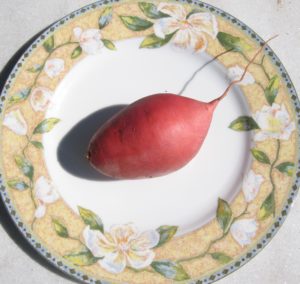
The Sweet Potato
The soft orange sweet potato is often mislabeled a “yam” in parts of North America. The sweet potato is botanically very distinct from a genuine yam. The genus Ipomoea that contains the sweet potato includes several garden flowers called morning glories. The sweet potato is not a potato or even a distant cousin. Potatoes are tubers; sweet potatoes are roots.
The plant is an herbaceous perennial vine bearing alternate heart-shaped or palmate lobed leaves and medium-sized sympetalous flowers. The edible tuberous root is long and tapered, with a smooth skin whose color ranges between yellow, orange, red, brown, purple, and beige. Its flesh ranges from beige through white, red, pink, violet, yellow, orange, and purple. Sweet potato varieties with white or pale yellow flesh are less sweet and moist than those with red, pink or orange flesh.
The center of origin and domestication of the sweet potato is thought to be either in Central America or South America. Sweet potatoes were domesticated at least 5,000 years ago. In South America, Peruvian sweet potato remnants dating as far back as 8000 BC have been found. Sweet potatoes are now cultivated throughout tropical and warm temperate regions wherever there is sufficient water to support their growth. The majority comes from China, with a production of 105 million tons. About half of the Chinese crop is used for livestock feed. In the U.S., North Carolina, the leading state in sweet potato production, provided 38.5% of the 2007 U.S. production of sweet potatoes. In 2007, California produced 23%, Louisiana 15.9%, and Mississippi 19% of the U.S. total.
Sweet potatoes provide twice the recommended daily allowance of vitamin A and more than one-third of the daily requirements of vitamin C. They are an important source of beta-carotene, vitamin B6, iron, potassium and fiber. Studies consistently show that a high intake of beta carotene-rich vegetables and fruits can significantly reduce the risks for certain types of cancer. Sweet potatoes contain virtually no fat or sodium.
Sweet potatoes that are a pretty, bright, orange color are richest in beta-carotene.
The orange tuber packs 438% of your daily value of infection-fighting vitamin A. Like carrots, sweet potatoes are a major source of skin-protecting beta-carotene. While bananas are often touted as the go-to source of potassium, a medium sweet potato has 28% more potassium than a banana. Potassium helps your body absorb fluids to replace sweat losses.)
Besides simple starches, sweet potatoes are rich in complex carbohydrates, dietary fiber, beta-carotene, vitamin C, and vitamin B6. Pink, yellow and green varieties are high in carotene, the precursor of vitamin A. In 1992, the Center for Science in the Public Interest compared the nutritional value of sweet potatoes to other vegetables. Considering fiber content, complex carbohydrates, protein, vitamins A and C, iron and calcium, the sweet potato ranked highest in nutritional value. According to these criteria, sweet potatoes earned 184 points, 100 points over the next on the list, the common potato. Despite the name “sweet”, it may be a beneficial food for diabetics, as preliminary studies on animals have revealed it helps to stabilize blood sugar levels and to lower insulin resistance. While sweet potato provides less edible energy and protein per unit weight than cereals, it is a higher nutrient density source of certain vitamins and minerals than cereals.
Although the leaves and shoots are also edible, the starchy tuberous roots are by far the most important product. Sweet potato leaves and shoots are a good source of vitamins A, C, and B2 (riboflavin).
The plant does not tolerate frost. It grows best at an average temperature of 24 °C (75 °F), abundant sunshine and warm nights. Annual rainfalls of 750–1,000 mm (30–39 in) are most suitable, with a minimum of 500 mm (20 in) in the growing season. The crop is sensitive to drought at the tuber initiation stage 50–60 days after planting, and it is not tolerant to waterlogging, as it may cause tuber rots and reduce growth of storage roots if aeration is poor.
Depending on the cultivar and conditions, tuberous roots mature in two to nine months. Sweet potatoes rarely flower when the daylight is longer than 11 hours. They are mostly propagated by stem or root cuttings or by adventitious roots called “slips” that grow out from the tuberous roots during storage. They grow well in many farming conditions and have few natural enemies; pesticides are rarely needed. Sweet potatoes are grown on a variety of soils, but well-drained, light- and medium-textured soils with a pH range of 4.5-7.0 are more favorable for the plant. They can be grown in poor soils with little fertilizer. Sweet potatoes are very sensitive to aluminum toxicity and will die about six weeks after planting if lime is not applied at planting in this type of soil. They are sown by vine cuttings rather than seeds. The rapidly growing vines shade out weeds and little weeding is needed.
In the Southeastern United States, sweet potatoes are traditionally cured to improve storage, flavor, and nutrition, and to allow wounds on the periderm of the harvested root to heal. Proper curing requires drying the freshly dug roots on the ground for two to three hours, then storage at 85–90 °F (29–32 °C) and 90 to 95% relative humidity from five to fourteen days. Cured sweet potatoes can keep for thirteen months when kept at 55–59 °F (13–15 °C) and >90% relative humidity. Colder temperatures injure the roots.
Cuttings of sweet potato vine, either edible or ornamental varieties, will rapidly form roots in water and will grow in it indefinitely in good lighting with a steady supply of nutrients. Sweet potato vine is ideal for use in home aquariums, trailing out of the water with it’s roots submerged, as it’s rapid growth is fueled by toxic ammonia and nitrates, a waste product of aquatic life, which it removes from the water. This improves the living conditions for fish, which also find refuge in the vast root systems.
Researchers at North Carolina State University are breeding sweet potato varieties that would be grown primarily for biofuel production.
Candied sweet potatoes are a side dish consisting mainly of sweet potatoes prepared with brown sugar, marshmallows, maple syrup, molasses, orange juice, marron glacé, or other sweet ingredients. Often served in America on Thanksgiving, this dish represents traditional American cooking.
In South America, the juice of red sweet potatoes is combined with lime juice to make a dye for cloth. By varying the proportions of the juices, every shade from pink to black can be obtained.
by Susan Dean | Feb 5, 2018 | Gardening
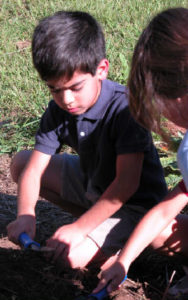
The SOIL
I don’t know of a single kid that isn’t crazy over digging in the dirt! Just put a shovel in hand and you will be surprised. Ask kids questions to see what they know about soil. The two groups of living things are plants and animals. The oldest living thing on Earth is a tree. The largest living thing on earth is a tree. A lot of our food comes from trees. Organic means coming from living things. Organic chemistry is the chemistry of living things. Organic gardening is gardening naturally without poisons. The chemistry of living things is based on the element carbon. Carbon under great pressure produces the diamond. I like this element!
Everything in the universe is made of elements. Over 100 different elements have been identified. Elements are made in stars. “You are just a little bit of stardust!” Name some elements: iron, tin, copper, gold, silver, calcium, oxygen, hydrogen, phosphorous, mercury, carbon. Your body needs nutrition that has certain elements to grow healthy. Plants get these elements from good rich soil. We get most of these elements from plants, our food.
There are many different kinds of soil: Clay, sand, silt, loam. What makes soil? Discussion. The richest soil is made from things that were once alive: leaves, fruits, fallen trees and limbs, dead animals, bone, eggshells. There are many colors of soil. Sand may be shades of orange, white, gray, black or pink. Clay may be red, orange, gray, or white, but the best soil for growing plants is rich dark black loam, which comes mostly from living things. People call it “Black Gold”. It stays soft enough for young roots to grow, holds water, and is rich with nutrients that plants need to grow healthy. Let kids examine and feel soil samples.
Pour water through 3 bottles of different kinds of soil that have holes in the bottom and measure the uptake of water from each. Discuss composting and feeding the soil with raw food scraps and eggshells from kitchen.
Examine worms. Worms are important to composting soil. Worms have 5 hearts, a brain with two tiny lobes and a long spinal chord. It is divided into segments, has no bones but moves using muscles and very tiny hairs that are on each segment. They breath through their skin and it needs to stay moist for them stay alive.
Materials: Chart of the elements, samples of different colors and types of soil, bowls of different soil types, water bottles for making sedimentators, container of worms, 3 plastic bottles with holes punched in the bottom for drainage.
Activities: Examine and feel soil samples. Observe worms. Make sedimentators. Go for a walk and collect different types of soil in a bottle about 1/2 full( you may want to have some soil with you in case there is no sand or clay) Have kids fill bottle the rest of the way with water, shake up, and then set aside to see how it settles out. Fill a plastic bottle with sand, one with clay and one loam. Bottles should have a few holes in bottom close together. Pour 1 cup of water in each bottle; collect from the bottom and measure to see which one absorbs the most water.
Children love the song “Dirt Made My Lunch”!
Soil mixed with straw and water will, with the sun’s help, harden into bricks. You can also mix mud with spanish moss. Try turning mudpies into houses! Besides the fun of mud play, children learn about evaporation, building construction and the creative use of natural resources!

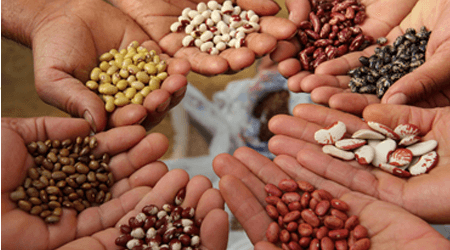
by Susan Dean | Feb 5, 2018 | Gardening, Plants, Seeds


























